
COVID-19 has made us all think a little more about the food we have hand and what happens if we can’t get to the store as regularly as we usually do. Finding food that lasts a long time is an essential part of this equation.
We’re not just talking about frozen or freeze dried foods either. There are many fresh foods that will last for months or even longer if you store them well.
Having a decent selection of long lasting food can help to keep you fed no matter what. This food is perfect for many different situations – not just COVID-19 or doomsday scenarios either. Having long lasting food at home means that waiting a few extra days to shop or having some unexpected visitors won’t be a big deal. It also gives you plenty of flexibility if you lose power for a few days because of a hurricane.
While the foods on this list all last a long time, many will survive for longer if you store them well. This includes relying on a dark and dry place, and perhaps using an airtight container.
And, if you want to store products for five years or more, it’s best to buy them from suppliers that focus on long-term storage. The packaging from such suppliers should be designed for the long-term. That’s not the case for the products sold from your local grocery store.
Food That Lasts A Long Time
Potatoes
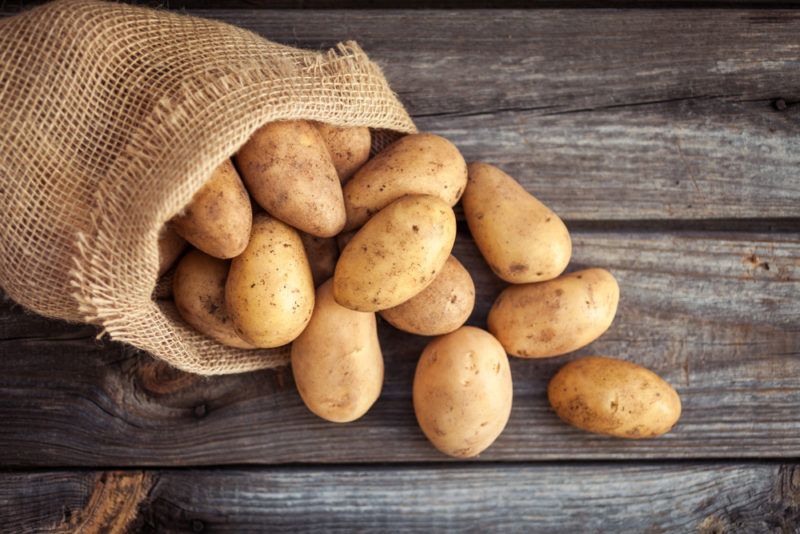
If you keep them in a dark, dry, and cool place, then potatoes should last anywhere from two to five weeks. Their shelf life is influenced by the type of potato. Large russet potatoes and white potatoes can last up to five weeks, while red potatoes, fingerling potatoes, and some other types will only last up to three weeks.
Just make sure that your potatoes aren’t stored next to onions. Potatoes and onions both give off gasses and can make each other spoil sooner. You’ll get more shelf life out of both vegetables by keeping them separate.
You can also buy potato flakes. These last much longer. Some brands even last more than 20 years. Potato flakes don’t taste as food as fresh potatoes, so it’s worth having both options on hand.
Rice
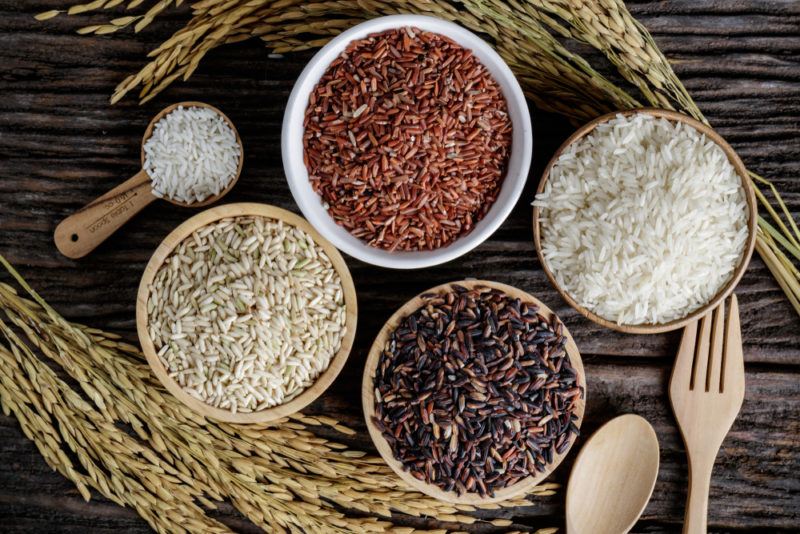
If you’re stockpiling food, rice is a must. It’s cheap and easy to find, especially if you’re focusing on white rice. Rice has a long shelf life too. It can last as long as 30 years if you store it in the right type of container. Look for airtight bags and plastic containers designed for food storage.
Of course, white rice isn’t the only type that stores well. Most other types of rice will last just as long. Brown rice is a little trickier, but you can extend its shelf life by keeping it in the freezer.
You don’t need to do anything special with rice that’s still in its bag. Once you’ve opened it, you’ll need to transfer the rice to an airtight container.
Rice is also versatile. It’s a staple food in many parts of the world, so there are countless recipes that use rice as a key ingredient.
Pasta
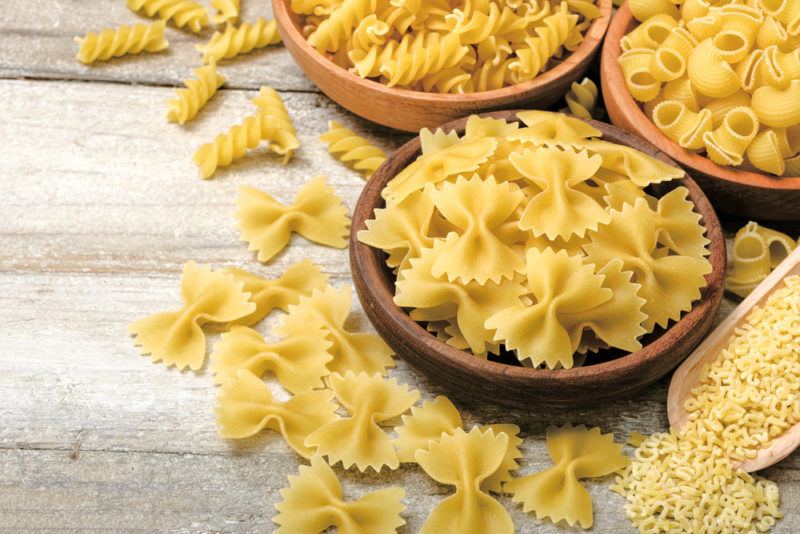
Pasta is just as popular as rice for stocking up the cupboard. It’s easy to see why too, as pasta and rice have many similar advantages.
Most type of freeze dried pasta in the grocery store will last you at least five years. In fact, you could get 20 years or more from a single packet of pasta.
However, you’ll need to pay attention to the packet and the type of pasta that you’re choosing. Some pasta will have a shorter lifespan, including those that don’t rely on the freeze fried approach. Fresh egg pasta, for example, doesn’t last long and needs to be stored in a fridge.
If you’re unsure, seek out companies that focus on long lasting food. These should be much clearer about how long their products will last. Some may even offer guarantees about shelf life.
Grains
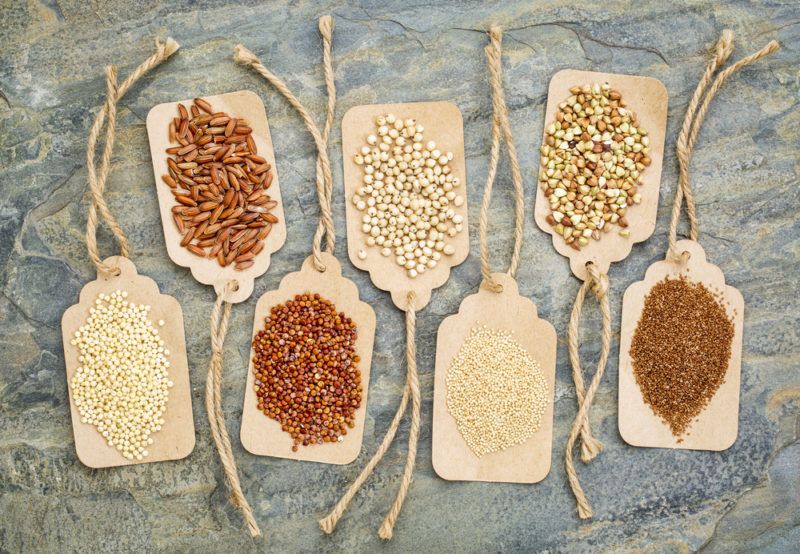
Grains and pseudograins can be broken into two general categories – soft grains and hard grains.
Soft grains include examples like quinoa, rye, and barley. These tend to last around eight years, if they’re in a sealed package with an oxygen absorber. Hard grains include millet, white wheat, and buckwheat. This time, the shelf life is 10 to 12 years.
If you want to store these grains, buy them from a supplier that specializes in long-term storage. This way the packages will be designed to keep out oxygen and moisture for a long time. The products at your local grocery store won’t have the same type of packaging.
Ramen Noodles
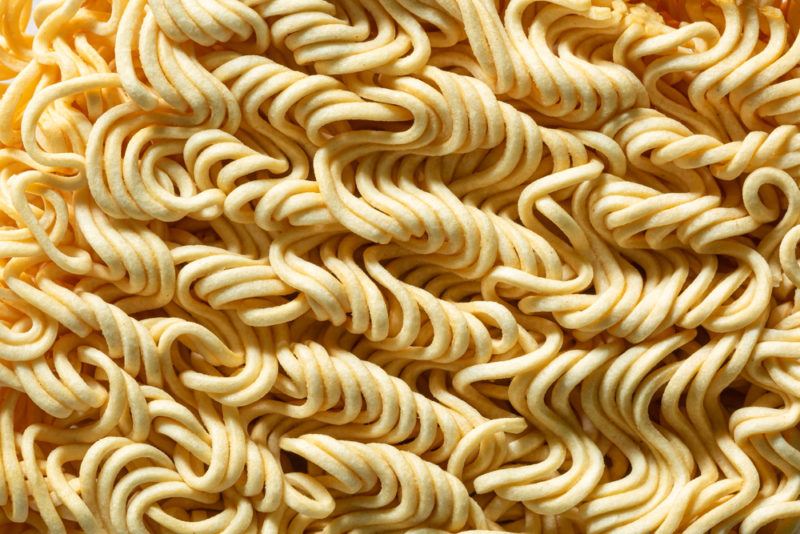
Noodles are similar to pasta, so it’s no surprise that they last for quite a while too. The noodles will easily last a year or two in their original packaging. Just be sure to keep them in a cool and dry place.
Lentils
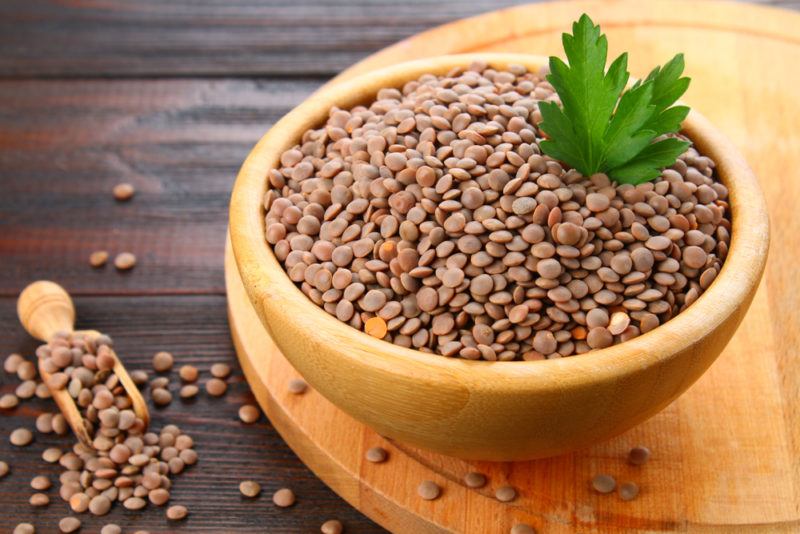
Most legumes have a decent shelf life and lentils are no exception. They’re a good source of protein and nutrients that can be easily added to meals. This often involves simply throwing lentils into a soup or a stew.
To get the longest shelf life, focus on whole lentils rather than split ones. You’ll get around four or five years out of the legume.
To make them last even longer, look for mylar oxygen absorber bags. These bags aren’t too expensive and they have impressive impacts on the shelf life of some foods. Using this type of bag could even give you 20 years from your lentils.
Chocolate
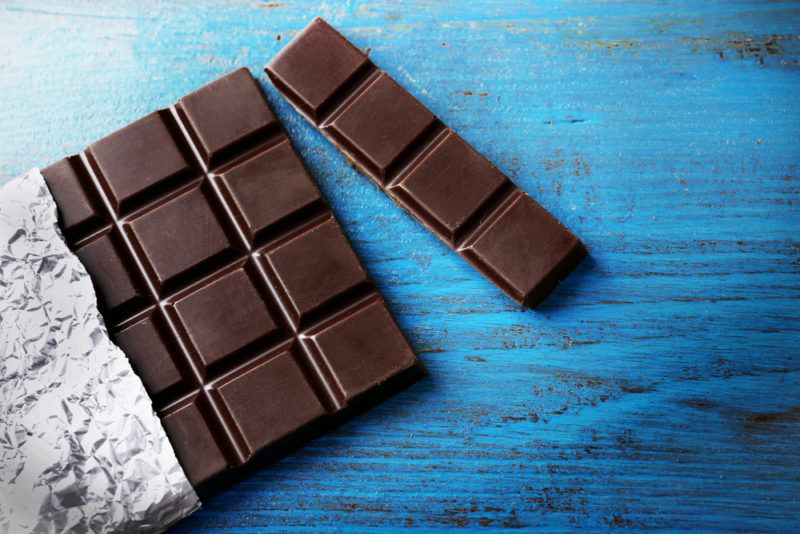
Did you know that dark chocolate lasts for up to two years? It’s best to keep the chocolate unopened in its original packet. If you do open it, then be sure to wrap the chocolate back up tightly once you’ve had some.
Milk chocolate and white chocolate don’t last nearly as long, but you do get around a year from them. The chocolate might still be edible after this point, but it loses much of its freshness and flavor.
Nuts
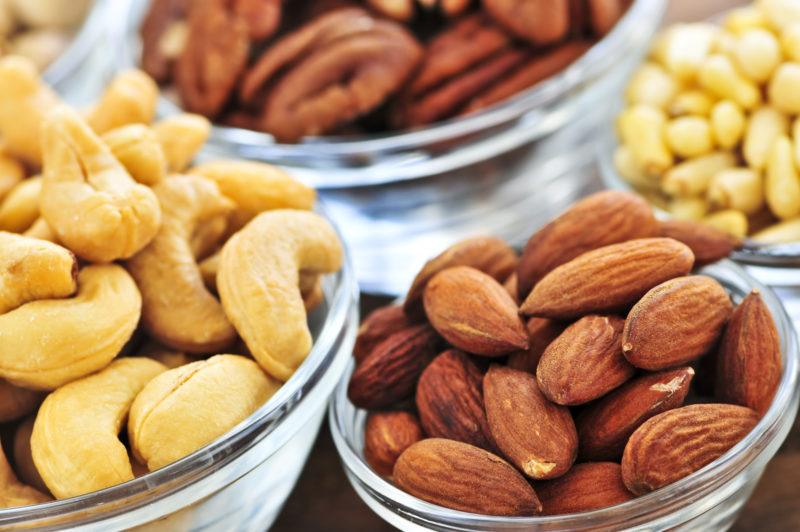
Nut don’t last forever, but they do last a decent amount of time. If they’re still in their shells, then you might get a year out of them. For nuts not in their shells, you’re looking at three or four months.
You’ll need to pay attention to the type of nut though, as some will go rancid faster than others. Storing nuts in the fridge can help with their shelf life too, especially if you live in a warm climate.
Nut butter will often last for a long time as well. For example, if the environment is cool and dry, peanut butter can last for around two years. That’s not too shabby for a spread that doesn’t need to be in the fridge.
Pickled Food
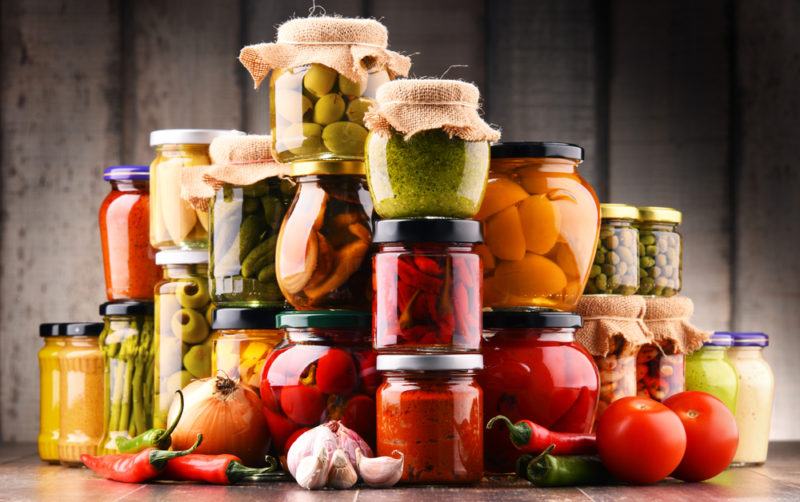
Pickling is an easy way to preserve vegetables that don’t have a long shelf life. Unopened pickles and pickled veggies can be stored for up to four years in a cupboard.
They need to go in the fridge once they’re opened and will then last around a year.
But, those estimates are based on canned pickles. Quick pickles, on the other hand, don’t tend to last. These should be eaten soon after making or buying them.
Popcorn
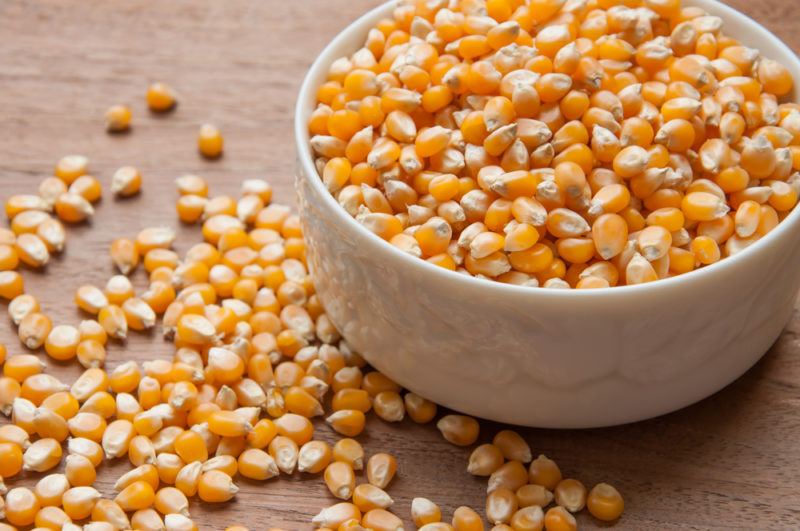
Here’s a little known fact – popcorn kernels will basically last forever. You just need to keep them dry.
So, you can easily buy popcorn kernels in bulk and pop them at your leisure.
Onions
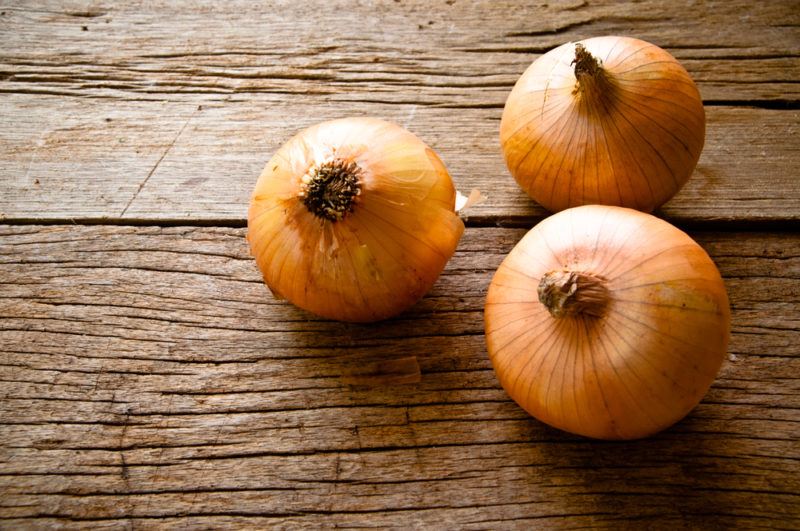
Onions need to be kept in a dry area (and away from potatoes!). The ideal temperature is somewhere between 30˚F and 50˚F. At this temperature, onions should last for around a year.
They won’t last nearly as long if you store them in a warmer environment, but you should still get a decent amount of time from them.
Garlic
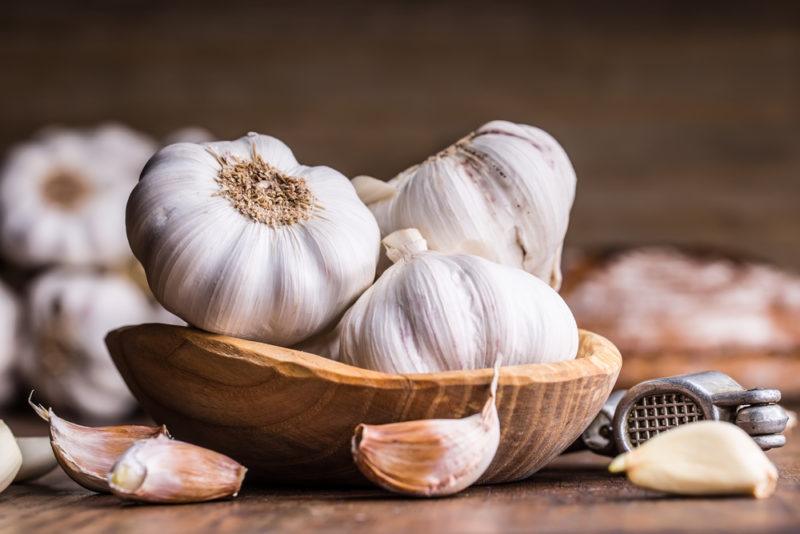
Garlic doesn’t last as long as onions or potatoes. You get around four months from them. While the bulbs do need to be kept dry, their temperature doesn’t matter too much.
Garlic mightn’t seem as relevant as stables like potatoes, beans, pasta, and rice, but garlic is still relevant. It’s a fantastic way to add flavor to your meals. This becomes essential when you’re relying on stored food. Otherwise, your meals would quickly get boring and bland. Using herbs and spices like garlic helps to keep your food engaging.
Beans
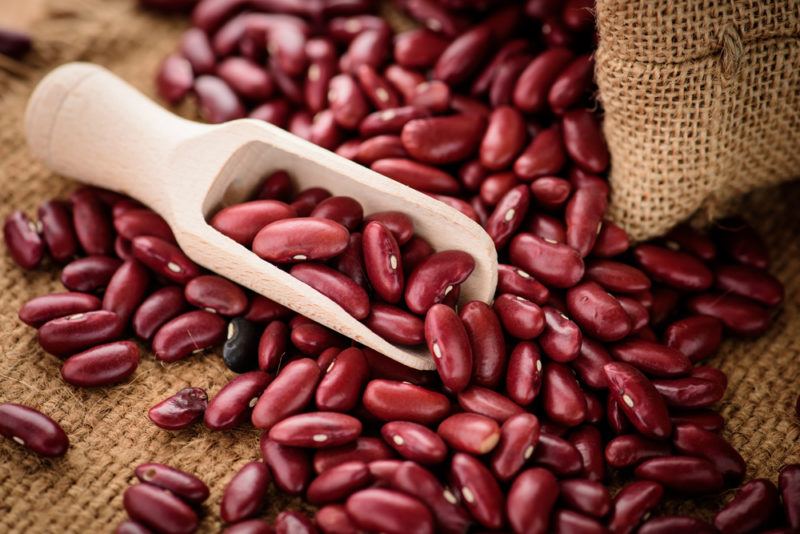
Beans come in many varieties, with plenty of different colors to choose from. While the types of beans have their differences, they’re all potent sources of plant-based protein and other nutrients.
Regardless of the type, dried beans all last a long time. As with rice and lentils, you’ll need to pay attention to how you store them. Look for some type of airtight container, as oxygen and moisture are key reasons for food spoilage.
Canned beans have an even more impressive shelf life. You can easily get two to three years out of a can of beans. The beans should last much longer than that, but the quality is likely to decrease after a few years.
Carrots
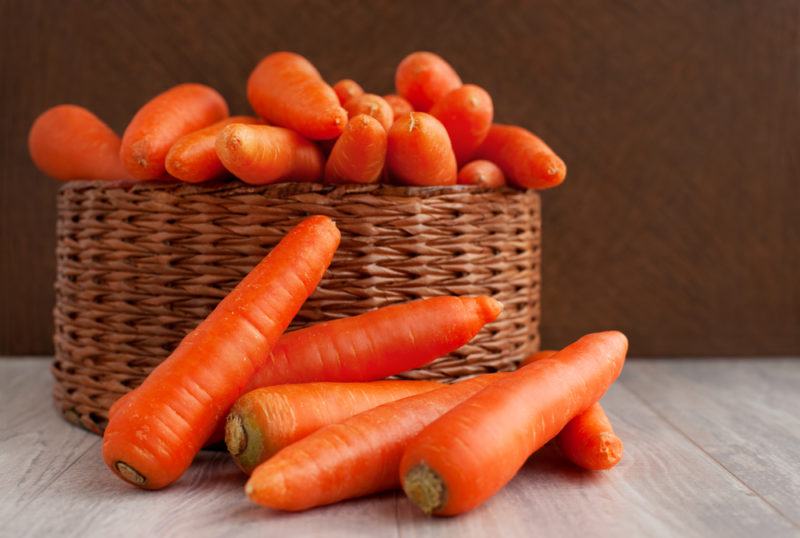
Carrots last longer than you might expect (whole carrots that is, baby carrots have a shorter shelf life). Keep the carrots in your veggie crisper on a paper towel. The paper towel absorbs moisture and helps the carrots to last longer.
The carrots will often last more than a month past their best before date. They can go soft over time, but they’re still perfectly safe to eat.
If your carrots have leafy tops, cut these off before you store the carrots. The vegetable won’t last as long if you leave the green top in place.
Rolled Oats
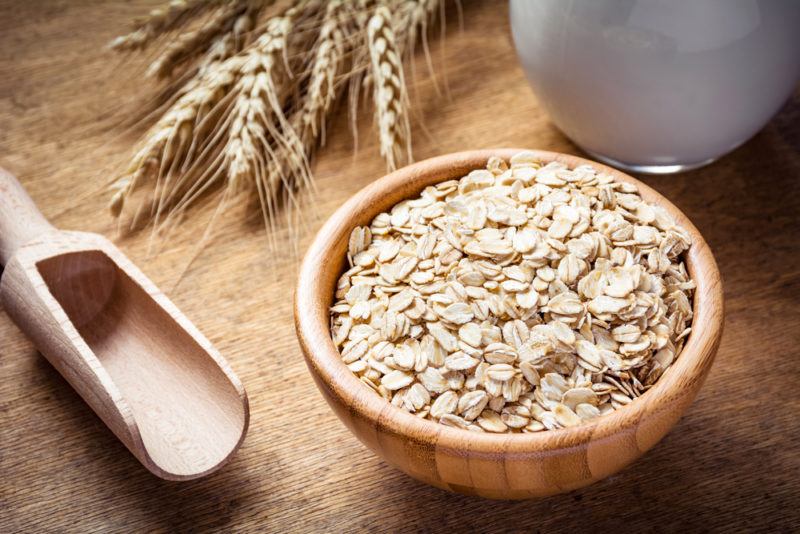
Oats are another fantastic pantry staple. They can last up to 30 years if you store them correctly, which is seriously impressive.
They’re also inexpensive and surprisingly filling. Don’t forget about the health benefits either. Oats have been linked to decreased heart disease risk and other notable advantages.
Don’t get locked into oatmeal as your only way to use oats. There are countless other options. Oats can even be sprouted, toasted, used in baking, or ground to create flour.
Cheese
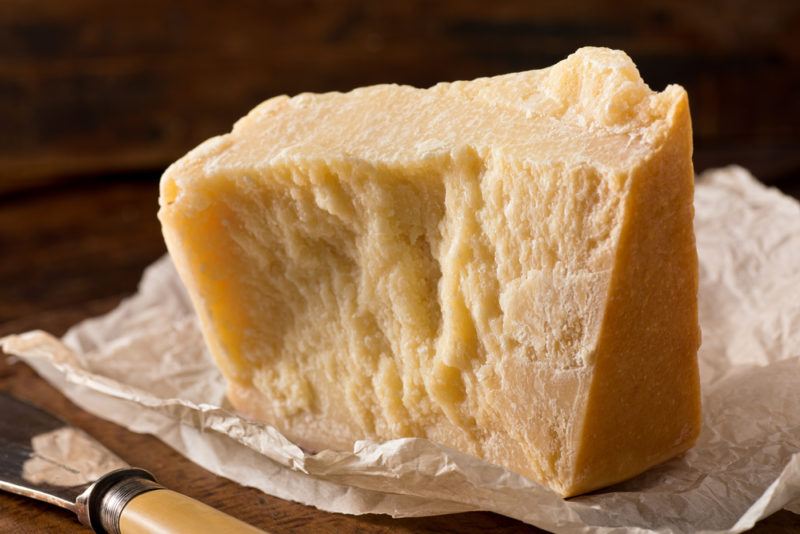
Cheese can last a surprisingly long time, as long as you’re storing it in the fridge. Hard cheeses will often last around six to eight weeks once they’ve been opened. They can easily survive for months in an unopened package.
Some types are even more resilient. Parmesan is the classic example here, as it will last three months or so after opening. The cheese just dries out once it is past its best, so you could still use it grated over pasta. The low moisture content means that you can even store parmesan cheese outside of the fridge.
Hard aged cheeses are resilient too. Many will last between four and six months, as long as they’re unopened.
Don’t stress too much about expiry dates. Pay attention to the cheese instead. It will become unpalatable before it becomes dangerous, so there’s little to stress about.
You can even cut the mold off hard cheeses and eat the non-moldy parts – as long as the mold is white, blue, or green. Get rid of the cheese entirely if you see black or red mold.
As for heavily processed cheese, like Kraft American Singles, how long they last is anyone’s guess. They don’t seem to go moldy, regardless of how long you leave them in the fridge.
Honey
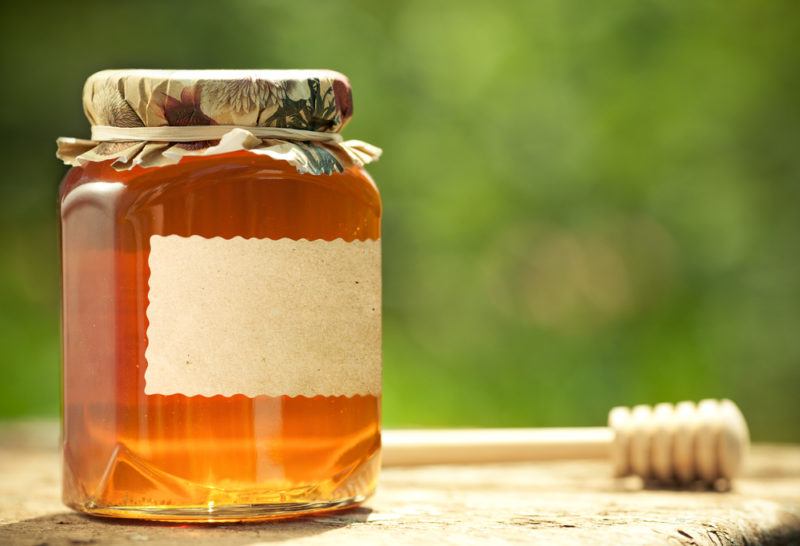
Honey doesn’t have an expiry date. It will last as long as you need it to. It may even be fine 100 years from now, although most of us will eat the honey much sooner. This makes honey an easy way to sweeten your food.
The only problem with honey is that it may crystallize over time. Don’t worry. This isn’t a sign that your honey has gone bad. You simply need to recrystallize it. Doing so is as easy as placing the jar of honey in a warm water bath.
Sugar
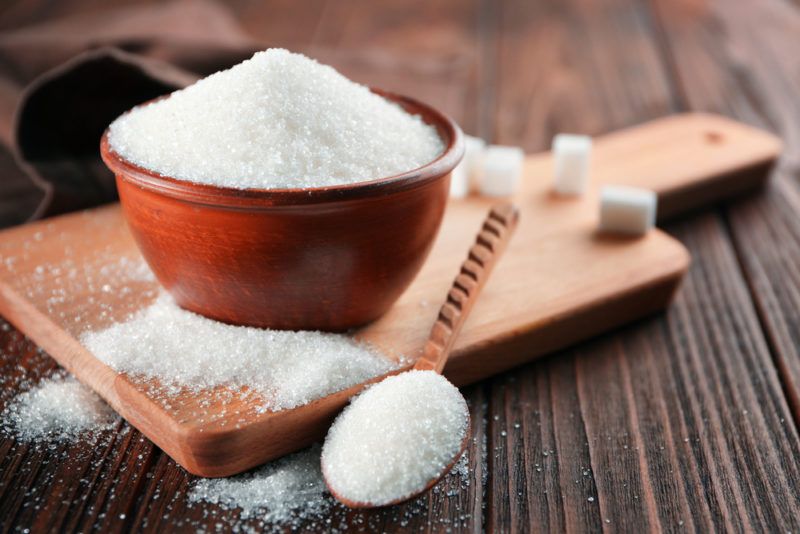
Regular sugar lasts just as long as honey. There’s one difference though – you need to keep the sugar dry. This is easily done if your sugar is in a sealed bag.
Once you’ve opened the sugar, you can add a moisture absorber to the packet and reseal it. The resealed bag might not last as long as one that was never opened, but it should still last for years.
The various types of liquid sugar can last a long time too, including corn syrup, maple syrup, and agave syrup. These will all be best if the jar is unopened, although corn syrup lasts indefinitely either way.
The trick here is to look for ‘real’ versions of the products. Something highly processed isn’t likely to have the same shelf life.
Ghee
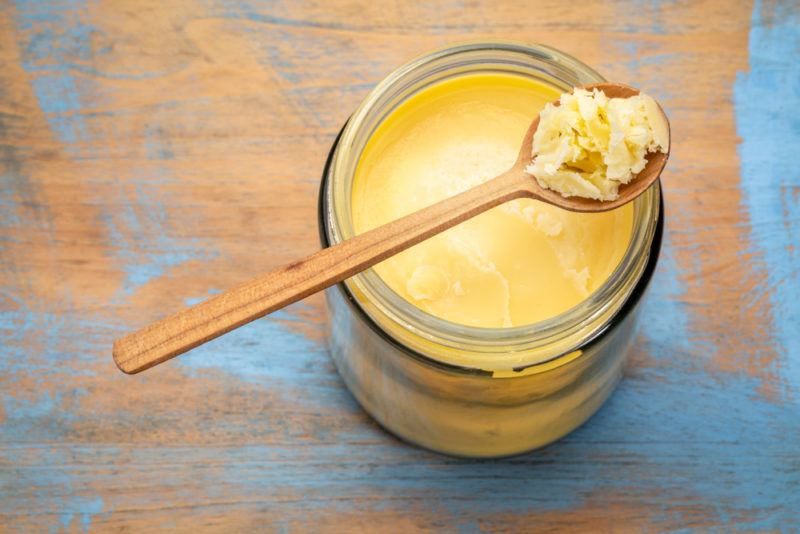
Ghee is a type of clarified butter. It’s popular among keto dieters and works just as well as butter in many recipes. It is made by boiling butter until the moisture has all evaporated.
The process gives ghee a much longer shelf life than butter. It doesn’t even need to be refrigerated until it has been opened. You can keep unopened ghee out of the fridge in a dark place for around two years and it will be fine.
Or, if you want even longer, try sticking your ghee in the freezer. It should last indefinitely.
Naval Oranges
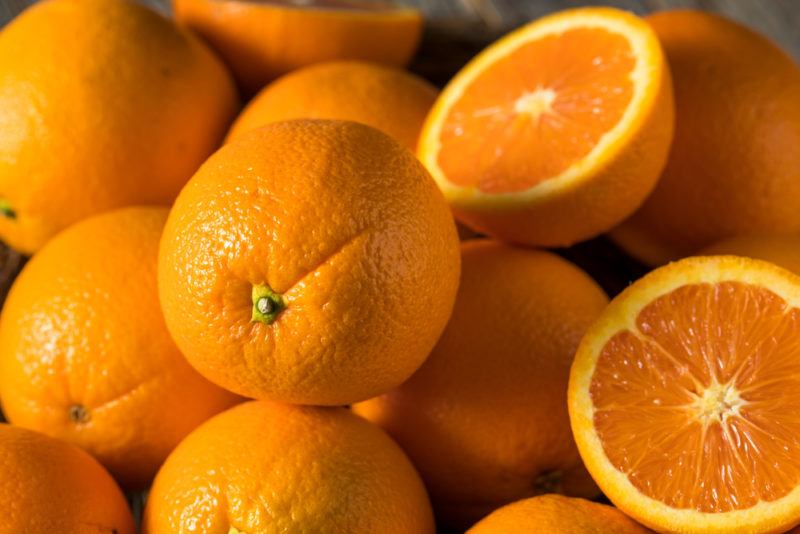
Fresh fruit often spoils fast. Naval oranges last longer than most. Store them in the vegetable drawer of your refrigerator and keep their skins on. If you do this, they should last for as long as two months.
I know… two months isn’t as impressive as the 100 year plus lifespan of honey. Still, relatively few fruits are still good after a month and you do need to keep some fruit in your diet.
Apples
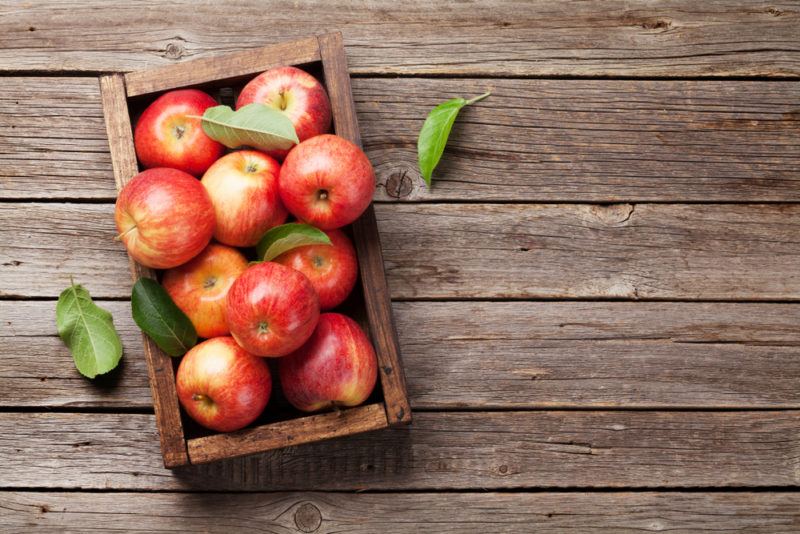
Apples are another long lasting fruit. They’ll often last for weeks if you just keep them in a fruit bowl on your counter.
To make them last longer, keep your apples in a plastic bag in your fridge’s crisper drawer. They can last a month this way, if not longer. Try to keep other fruits and vegetables in a different drawer make your apples last as long as possible.
Powdered Milk
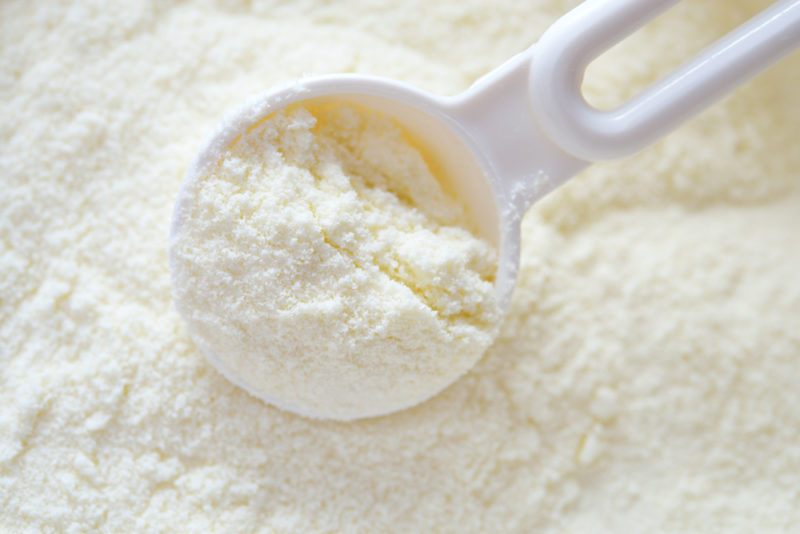
Powdered milk might not taste as good as the fresh stuff, but it certainly lasts longer. You’re often looking at around 20 years for storing the milk, if not longer.
Just like many other foods, you’ll need to keep powdered milk in a cool dry place. It’s best to store it with a moisture absorber. Most commercial powdered milk products should already have a moisture absorber, so be sure to keep this if you switch the powdered milk to a new container.
Even if you don’t like the flavor of powdered milk, you can easily use it in cooking.
Powdered Whole Eggs
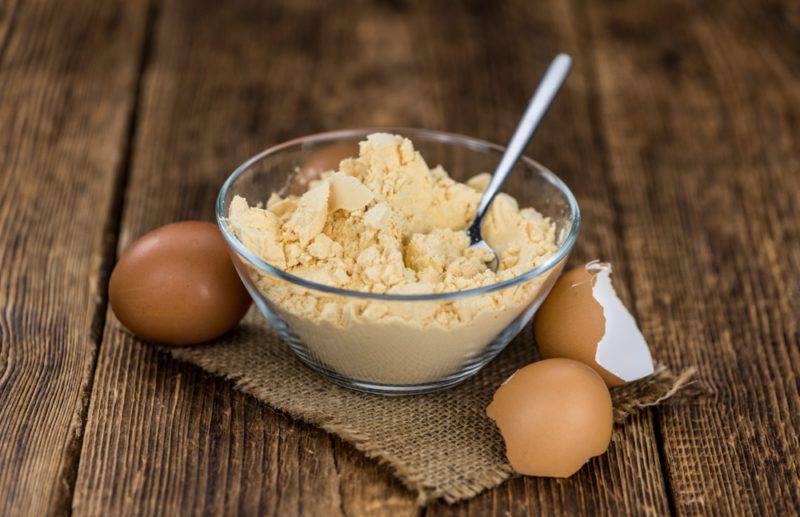
Yes. You really can buy powered eggs. Like powdered milk, powdered eggs don’t taste like the real thing. Still, they have an impressive shelf life and some products will last for around 15 years.
While the flavor of the eggs might not be ideal, you’re still getting plenty of nutrients. Plus, the eggs work well as a recipe ingredient. The difference in flavor shouldn’t be very noticeable in most recipes.
Protein Powder
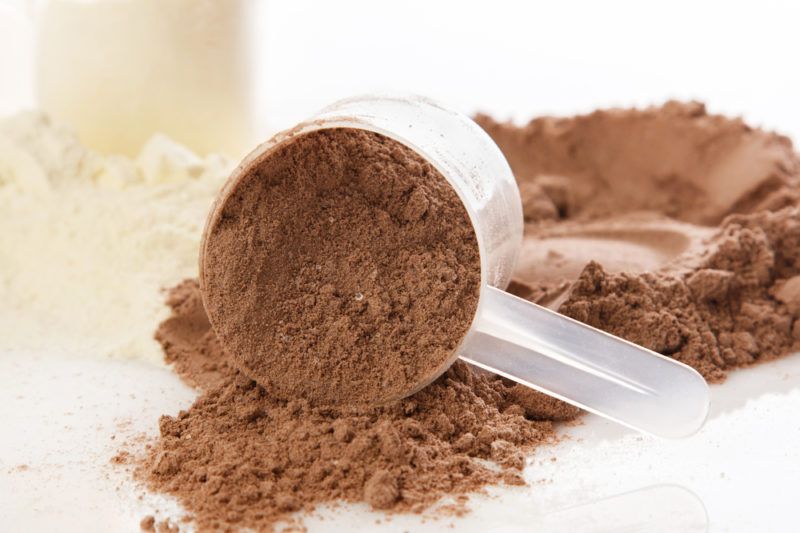
Protein powder often lasts just as long as powdered milk. The powder can then be mixed with milk or even water to give you a protein boost. Many brands also contain plenty of important nutrients.
Creating a drink isn’t the only way to use protein powder either. You can also use it in a variety of recipes, including baked foods. This is a powerful trick that makes it easy to increase your nutrient intake.
Pemmican
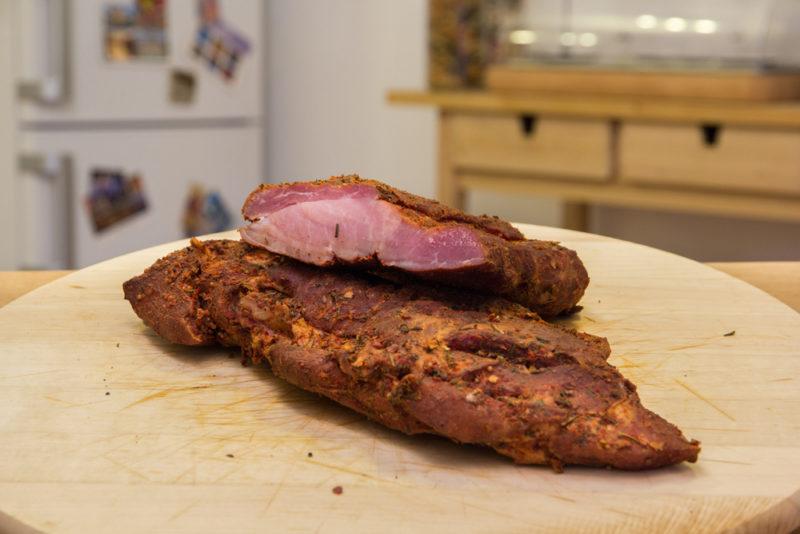
Pemmican is a traditional survival food. If it’s well made and stored correctly, then it can last around 50 years. It is made from berry powder, animal fat, and powdered lean meats. This makes it one of the few meat-based foods that lasts for a long time.
Opinions about the flavor of pemmican vary. Some people enjoy the taste, while others find it unappealing. Still, pemmican is a decent option if you want something hearty that you can make yourself.
Dried Meat
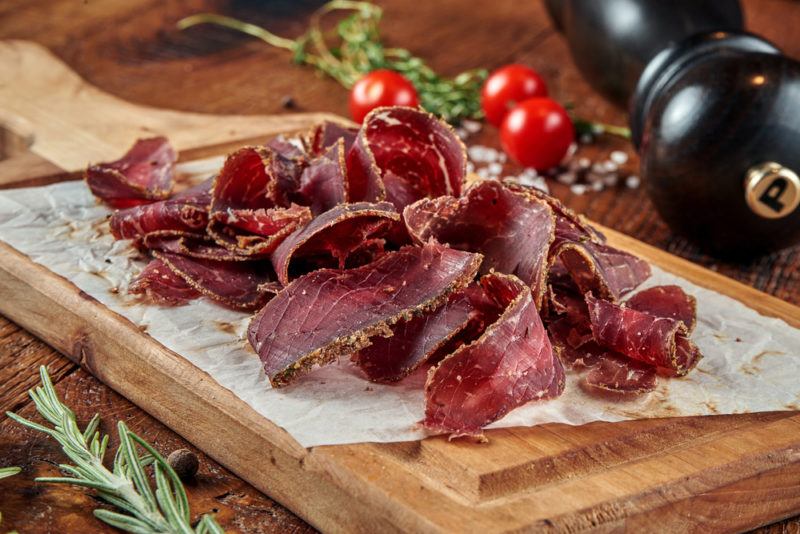
If you want something simpler and tastier than pemmican, dried meat is an easy choice. Jerky has a shelf life of roughly two years.
However, the type of meat used will influence how long the jerky lasts. Fat goes rancid over time, so leaner jerky will last longer than fatty jerky.
There are many places to buy jerky, or you can make your own. Making jerky yourself gives you control over the ingredients used and how long the jerky is dried for. If you take this approach, you’ll need to use oxygen absorbers to make sure the jerky lasts.
Freeze Dried Foods
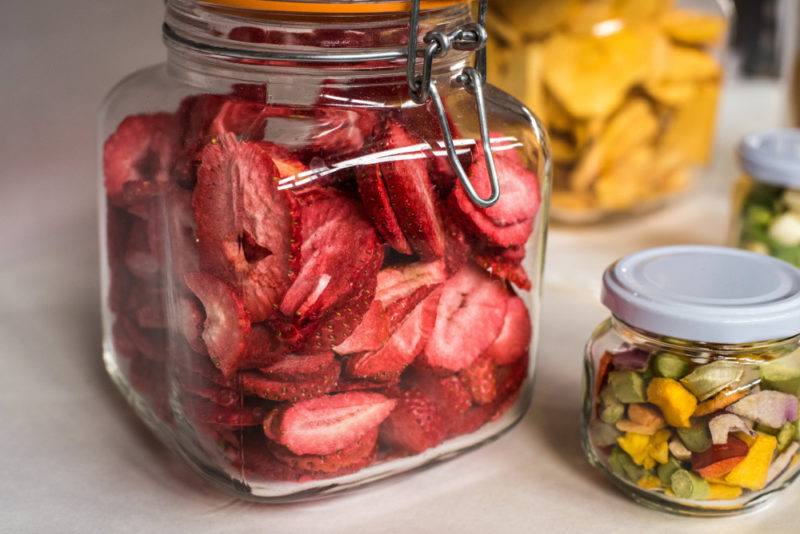
Freeze drying removes the moisture from food and gives it a long shelf life. The process also makes the food much lighter, which is why freeze dried meals are often used as army rations and food for hikers.
Freeze dried meals are one of the easiest ways to get all your nutrients. However, these can be expensive, so you might not be buying a large number of them.
You can find freeze dried ingredients too, including freeze dried fruits. Strawberries survive freeze drying particularly well, keeping their structure and flavor. They can even be rehydrated. Freeze dried meats are popular too.
Regardless of the type, freeze dried foods need to be kept sealed until you’re ready to eat them. Their shelf life decreases dramatically once they’re opened.
Seasonings
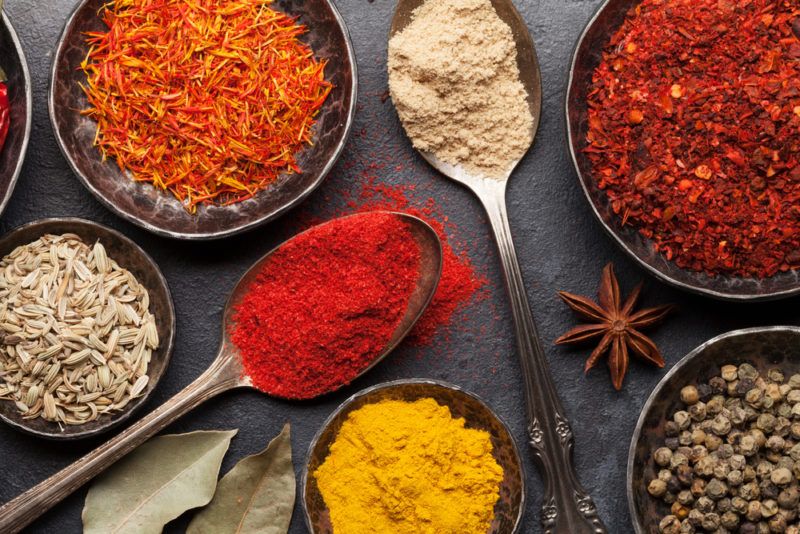
If they’re dried well, then herbs will last somewhere from one to three years. Unopened spices may last as much as four years, although the shelf life does decrease once you open the packet.
Keep your herbs and spices in a dark dry place. This will help them to last the longest.
Herbs and spices are easily overlooked when you’re thinking about stockpiling, but they’re crucial.
Remember, if you’re making meals using long lasting goods, you don’t have that many ingredients to play around with. Many of your meals are going to rely on some combination of beans, rice, pasta, and perhaps a few vegetables. Herbs and spices are an essential way to make this lack of variation seem interesting.
Similarly, bouillon cubes can last for around 10 years. Seal the cubes in an airtight bag with an oxygen absorber and you can extend the shelf life even further.
Don’t forget about salt either. If it’s kept dry, then salt will basically last forever. Its quality won’t decrease over time either. This is true for regular table salt and alternatives like pink Himalayan salt.
Dehydrated Fruit
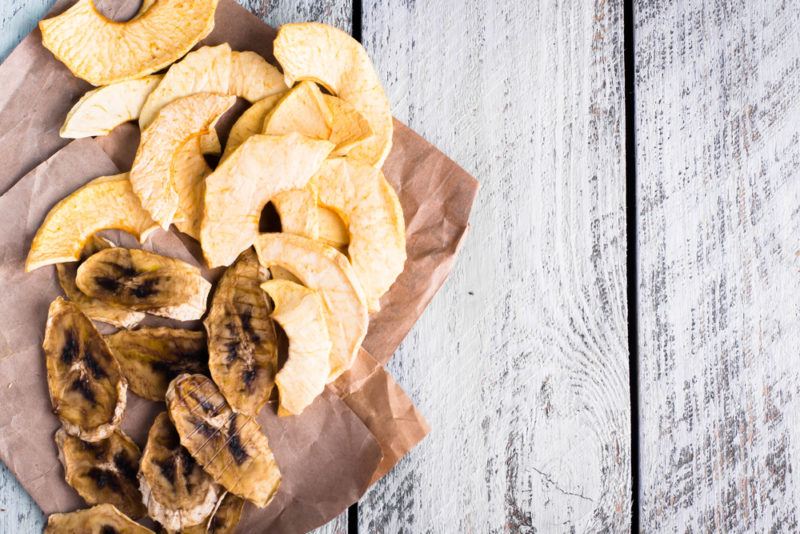
Dehydration removes the moisture from products too, so most dehydrated foods have a decent shelf life. You’re looking at around five years for sliced and dehydrated fruits.
This is true for dehydrated fruits that you buy and any you make using a dehydrator. The best option here will depend on your priorities. Making dehydrated fruit yourself is certainly cheaper. Of course, the process is time-intensive, so it won’t suit everyone.
However, there are some differences in how long dehydrated fruits last. The way you store the fruit will have an impact too.
For example, raisins may last for around a year in your cupboard, although estimates about the shelf life of raisins vary widely. You can freeze raisins to make them last longer. If you do this, then their shelf life is basically indefinite.
Just like with other foods, you’ll need to use your common sense. Keep an eye out for common indications of spoilage, like an unusual aroma, mold, or color changes. These all suggest that your fruit is no longer safe to eat.
Dehydrated Vegetables
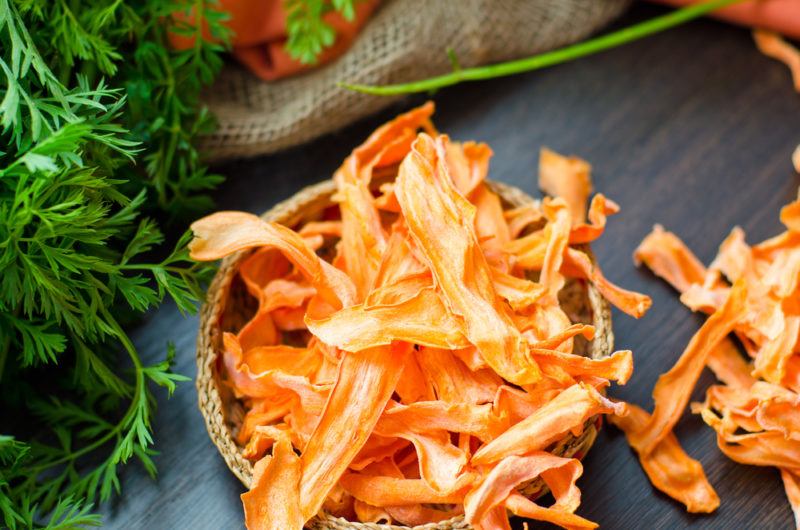
Vegetables can be dehydrated too. Many of them will last 10 years or more (like dehydrated carrots, which can last up to 20 years). The exact shelf life depends on the vegetable itself and its moisture content.
Dehydrated fruits and vegetables will generally last longer if you make them yourself. This is because many companies don’t have a focus on shelf life.
If you don’t want to go to all that effort, do some digging around. Some small companies guarantee the shelf life of their dehydrated products. Look for ones that provide products for preppers and survivalists.
Winter Squash
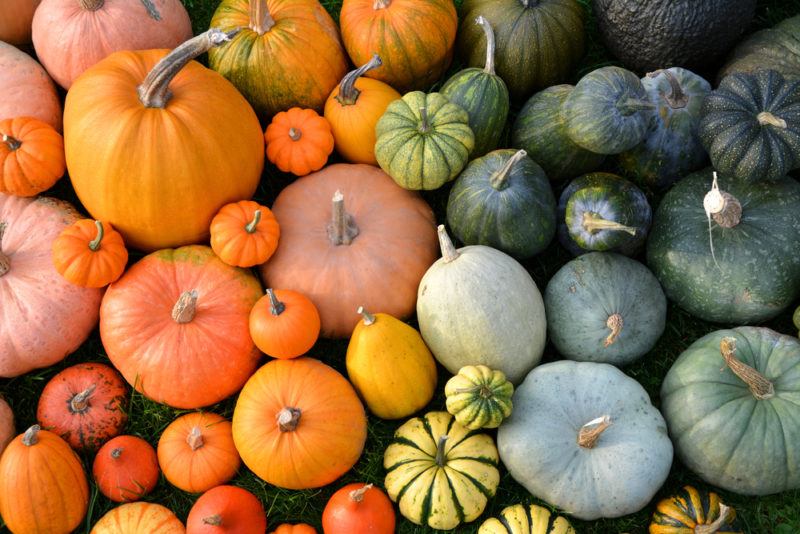
Most types of winter squash, including butternut squash and pumpkins, can last for up to six months if you store them well. You’ll need to keep them in a dark and dry environment. Don’t pack them too closely either. There needs to be enough space for air to circulate.
Jam
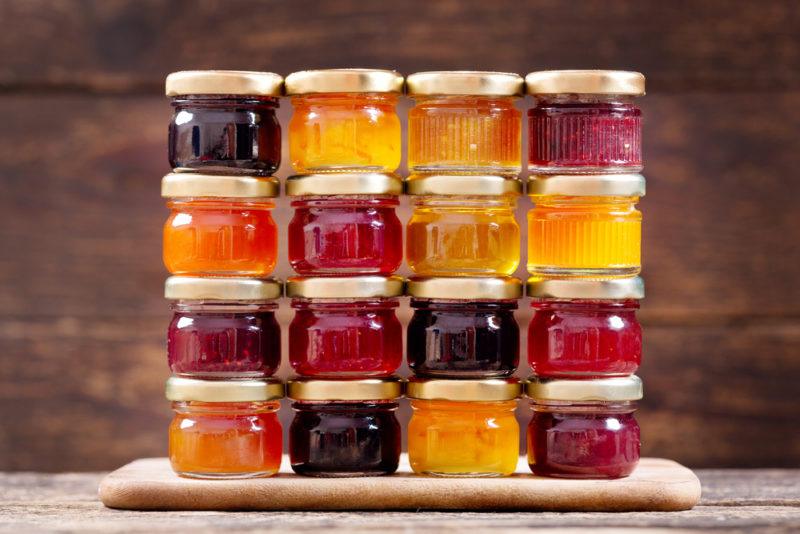
Jam typically comes with an expiry date of a year or less. But, if the product remains unopened, it should last for a few years without a problem. Some jams could even last 20 years or so.
The jam won’t last nearly as long once it has been opened. You’re normally looking at two months for jam brought from the store and a month or so for homemade jam. The quality will start to deteriorate after this, but the jam itself should still be safe to eat for another few months.
Canned Food
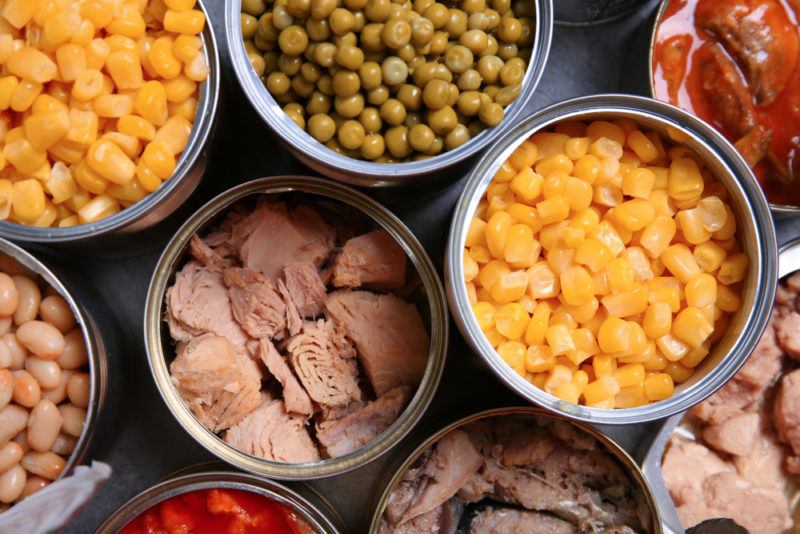
Canned food can be easily stored for anywhere from one to three years. They should last even longer if you keep them in a temperature-stable environment. Some estimates say that you can easily get six years out of canned food.
There are even people who say that canned food might last forever.
We’re not just talking about canned fruit and vegetables either. Canned meat, like spam, tuna, and chicken, has the same shelf life as other types of canned products.
However long you store the cans for, be sure to check them carefully before eating the food inside. Cans that are corroded, notably dented, or have been extreme temperatures should be avoided. These put you at risk for botulism, which can be deadly.
And, as always, use your common sense. If your food looks or smells funky, give it a hard pass.
When shopping for canned food, look for products with as little processing as possible. For example, canned meat should rely on the meat, salt, and little else. Such products will be much better for you than something that’s heavily processed.
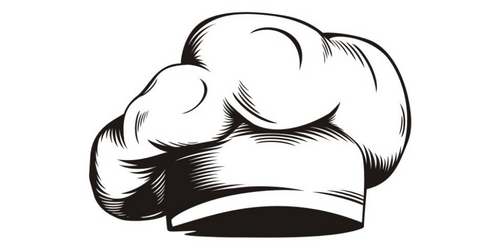




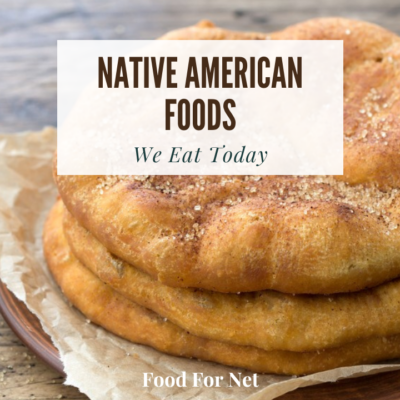
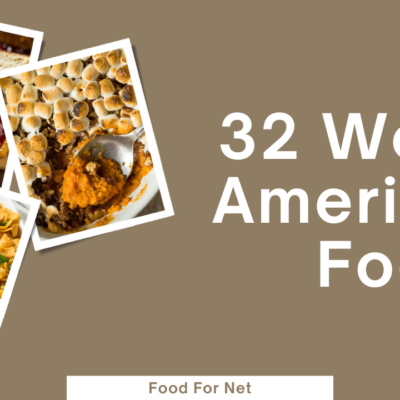
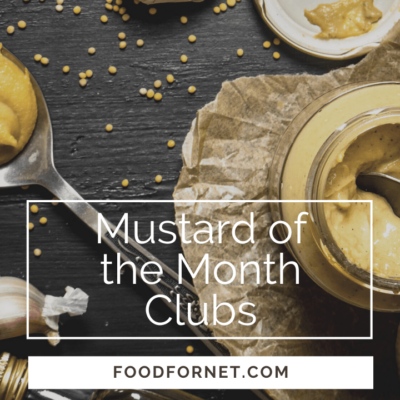

 23 Unusual Cocktail Ingredients For When You Want To Experiment
23 Unusual Cocktail Ingredients For When You Want To Experiment
Leave a Reply